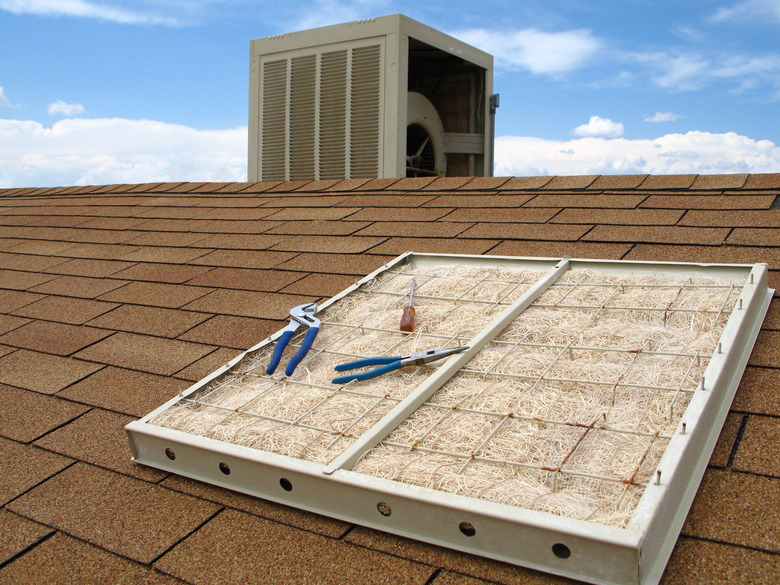Swamp Coolers And Mold
While homeowners in many parts of the United States use air conditioners to cool off, homes in Southwestern states often rely on moisture from evaporative coolers. These devices, commonly known as swamp coolers, use about one quarter of the electricity needed to run an air conditioning unit. However, swamp coolers can fall prey to mold buildup that threaten your health. Doing regular evaporative cooler maintenance helps reduce the risk of mold, but knowing how to handle mold if it develops can keep your home cleaner with safer air.
Tip
Mold can grow in various parts of a swamp cooler because the cooling device relies on water to lower the temperature and add humidity to the air.
Components of Swamp Coolers
Swamp coolers have the potential to harbor mold at any of several points in their structure. The system consists of a central unit with a belt-driven fan and a swamp cooler pad that remains wet because of water pumped from the home's water supply. This unit then connects to the rooms in a house through ducts. Any of these components could experience a buildup of mold on the surface either from the moisture content of the air or from the water itself.
Swamp Cooler Operation
A water pump directs water to the cellulose pad to keep it damp. Some units have water lines connected that supplies the water consistently while others have to be filled manually. The fan continuously blows dry, warm air over the moistened pad. The dry air takes up some of the moisture and cools as it passes over the pad before continuing on its way to all parts of the home.
While this process works well in relatively dry environments, a swamp cooler left to run for several humid days will begin to smell. The odor comes from mold buildup as the saturated components begin distributing mold spores through the ducts.
Consequences of Mold Growth
Mold growth inside a home can cause a variety of health problems. People with mold allergies may experience skin or eye irritation, nasal congestion, fevers or wheezing. People who suffer from lung disease may experience lung infections as the mold invades their respiratory systems, while asthma patients may develop serious breathing problems.
Swamp Cooler Mold Cleanup
Homeowners with swamp coolers who smell the musty presence of mold or experience reactions to airborne mold spores should have the swamp cooler cleaned to remove any mold deposits. Cellulose pads infiltrated with mold may require replacement. Moldy ducts call for professional duct cleaning and mold remediation, since the procedure will kick up mold spores and other allergens, temporarily making a dwelling unsafe. A High Efficiency Particulate Arrestor, or HEPA air cleaner, removes these toxins from the air within 24 hours.
Prevention of Mold
Because of swamp coolers' introduction of extra humidity into the air, homeowners living in humid regions should install a conventional air conditioner instead. Swamp cooler owners should open their windows just enough to allow air to flow through the home and keep the moisture level under control. Regular preventative maintenance can help ensure that a swamp cooler operates correctly, reducing the risk of mold problems.
